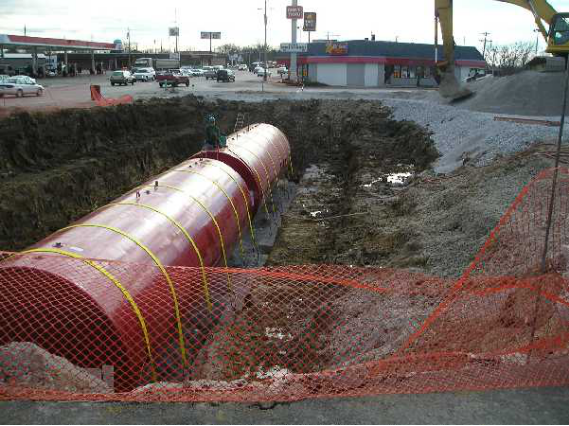In our previous blogs, we discussed in detail how to prevent and detect UST leaks at gas stations and other UST facilities.
But what should you do if a leak happens?
What immediate actions should you take? Who should you contact? How should you proceed to managing and controlling the leak?
Responding to a UST Leak
If you’ve detected a leak in your UST system,the very first thing you need to do is remove any explosive or flammable materials stored in the release area. A potential contact can produce devastating consequences.
Relocate the items to a safe storage.
If the petroleum vapors from the leak have intruded into an indoor building space, quickly vacate the building and make arrangements for active ventilation.
Also, you should take immediate steps to prevent and control discharges to nearby stormwater utilities, surface waters and wetlands. Of course, it’s impossible to implement a comprehensive discharge control plan on an immediate basis, but quick fixes should suffice in the short term.
After you’ve taken these steps, the next thing you need to do is report to the EPA about the release.
Although, by law, you’re only bound to report releases to the EPA that exceed 25 gallons, it’s better to report the release anyway. Especially, if you’re dealing with a UST leak for the first time, reporting to the EPA could help in better leak management.
How to report the leak to the EPA?
You need to contact your local implementing agency assigned by the EPA to oversee release complaints in your area.
Where to find the contact details of your local implementing agency?
The EPA provides complete contact details of all local implementing agencies on its website. If you’re located in an Indian Country or a tribal region, click on the “Regions” or “Tribes” tab respectively to access contact details of your respective implementing agency.
Your local implementing agency will further guide you on how to proceed with managing and controlling the leak and cleaning the contaminated site.
One more thing you must do is inform people living near your gas station about the UST leak. It could be possible that their domestic water supplies may have become contaminated. Provide them with bottled water until you get an all clear from the EPA.
We hope you found this information useful.
A BONUS read: Recommendations for Hanging Hardware Inspection after a Flood





